Snake Types
There are 2700 species and subspecies of Snakes in the world. As a group, they lack legs, hearing, and movable eyelids. Having evolved from lizards, some snakes still possess skeletal remnants of legs. Snakes have a large number of vertebrae (180 to 435), most of which have ribs attached. There are 4 families of snakes: Boidae (boas and pythons), Colubridae (racers, garter snakes, rat snakes and many others), Elapidae (cobras, mambas, and their relatives), Viperidae (rattlesnakes and other vipers).
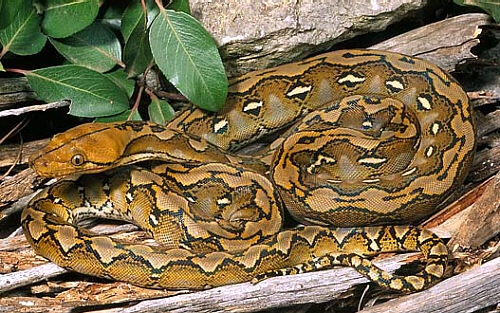
Reticulated Python - Indonesia - Source: David Barker
The facts about the longest and biggest snakes are very fuzzy, with many unsubstantiated claims. The world's longest snake (by reliable documentation) is the Reticulated Python, with a maximum length of, perhaps, 35 feet or more. Update - Largest snake fossil remains found - Titanoboa was 13m (42ft) and lived in the rain forest of north-east Colombia 58-60 million years ago. The snake was so wide it would have reached up to a person's hips, say researchers, who have estimated that it weighed more than a ton.
Very large female pythons may lay over 100 eggs at a time. Female pythons wrap their powerful bodies around their eggs until they are ready to hatch. This behavior is known as brooding and it prevents the eggs from getting too warm or too cool. The eggs need to remain close to 89 degrees Fahrenheit during the incubation period, which lasts about eighty-five days. The young pythons emerge by cutting a slit in the eggshell with their egg tooth.
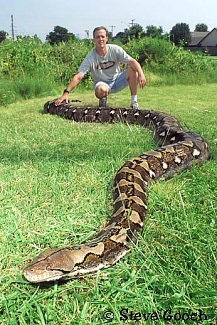
Reticulated Python - Oklahoma - "Fluffy" - 24 feet, 310 pounds - Source: Bob Clark

Anaconda
The largest snake in the world, by weight atleast, is the Anaconda, or Eunectes murinus, of South America. Green Anacondas, also known as water boas, are considered to be the heaviest. The biggest snakes of these species can grow to be up to 36 feet (11 m) long and can weigh up to 1,000 pounds (454 kg). Their camouflage coloring makes them very difficult to spot in their natural habitat and snakes this large are very rarely seen but claims of snakes 60 to 150 feet have been made. The specimen pictured above, caught in Venezuela, seems to have eaten a large meal in the not so distant past - capybara, pig, deer? After eating such a big meal, the snake would be looking for a place to relax and digest for weeks or months.
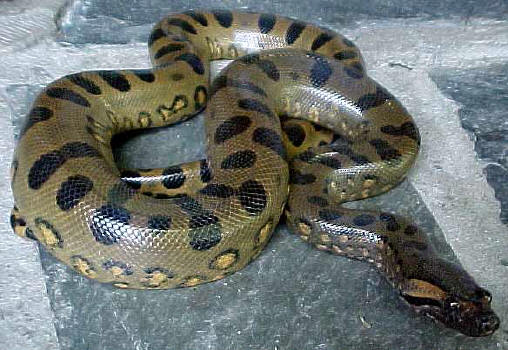
Green Anaconda
Snakes are the world's most effective natural control on rodent population. Owls do a good job too, much better than cats.
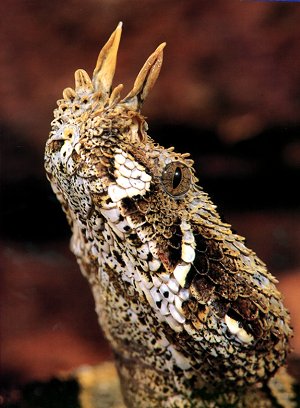
Rhinoceros Viper
The rhinoceros viper is one of the three species of puff adders. The reason these venomous snakes are called puff adders is that, when excited, they have the ability toenlarge their size considerably by inflating their bodies. This creates the "puffed" look that can be approximately twice it's normal size. These adders also make a sort of hissing noise through their nose as part of their respiratory function.
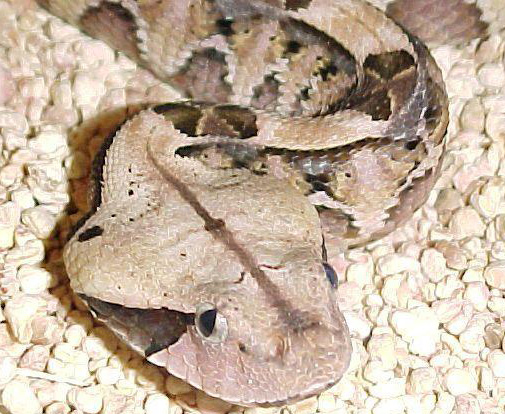
Gaboon Viper - Bitis gabonica - Source: Jess Jones
The natural habitat of the Gibbon Viper is along the equatorial belt of Africa. Because of their skin color and pattern they are difficult to spot. They may appear sluggish but are capable of attacking their prey with suprising speed.
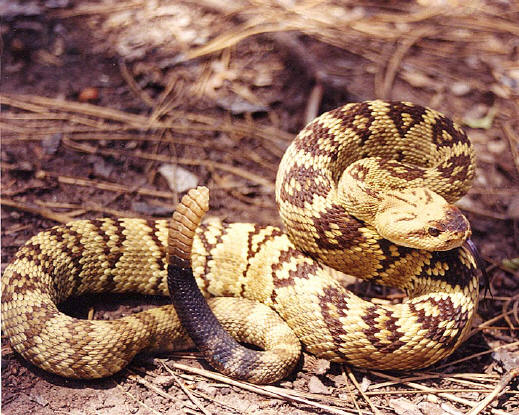
Black Tailed Rattlesnake - Crotalus Molossus Molossus - Source: Jeff Miller
You can't tell the age of a rattlesnake by counting its rattles because it gets a new rattle each time it sheds its skin, which can occur 1 to 6 times per year.

Albino Labyrinth Burmese Python
Most snakes can swallow prey that is 3 times or more their own body diameter.
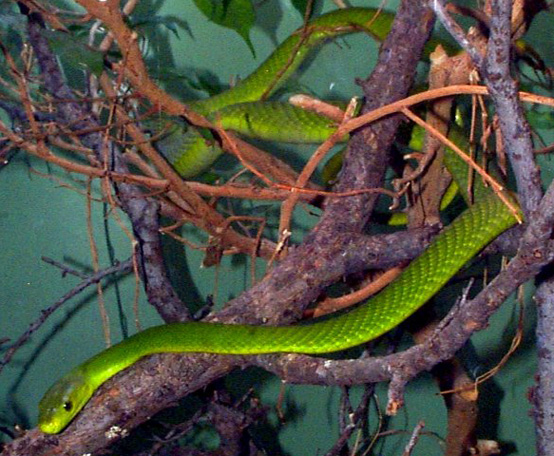
Green Mamba
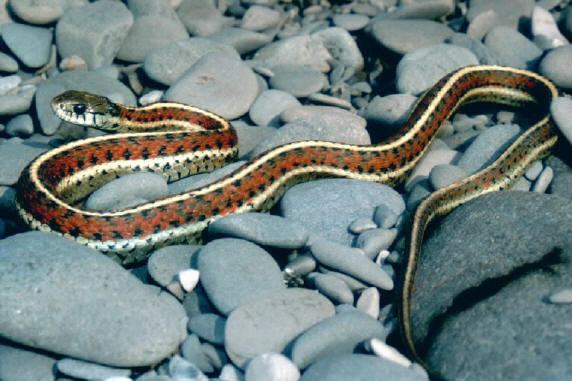
Western Terrestrial Garter Snake - Source: William Flaxington
Garter snakes do not lay eggs. Unlike most other snakes, they bear live young.
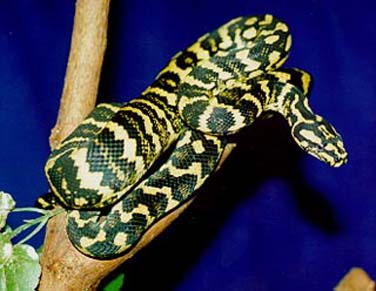
Jungle Carpet Python
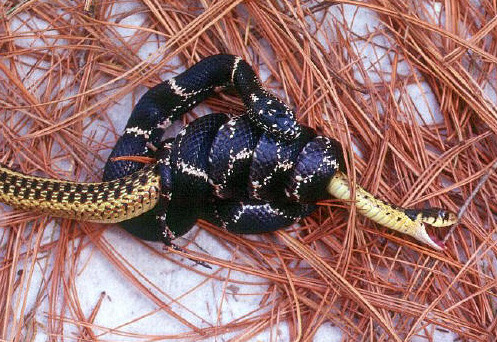
Eastern Kingsnake - Lampropeltis Getula Getula - Source: John White
This Eastern Kingsnake is attempting to kill a garter snake. The snake was rescued by the photographer.
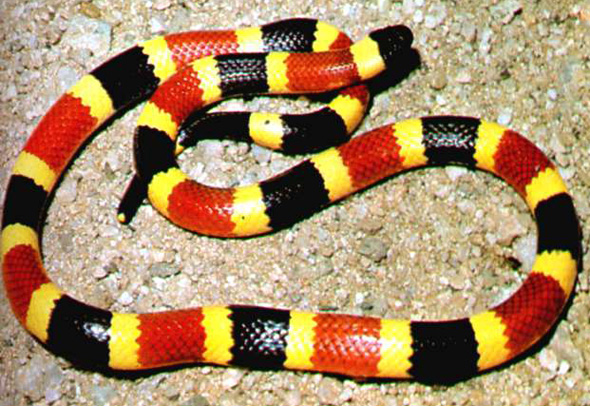
Coral Snake
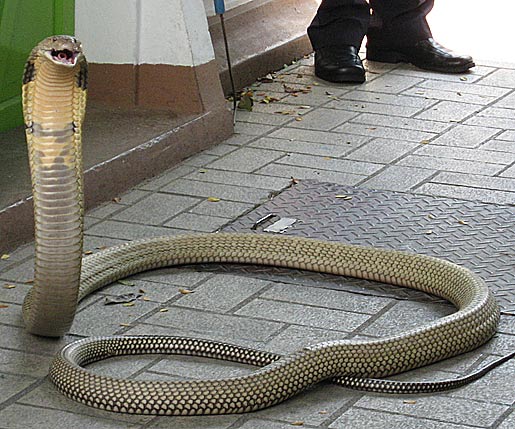
Thai King Cobra
This photo was taken at the Queen Saovabha Memorial Institute and Snake Farm in Bangkok, Thailand in 2008. See more about the 2005 Grand Snake Theft at this same snake farm. See more cobras or "naja" below.
Read about snake bites and how to avoid them.
No comments:
Post a Comment